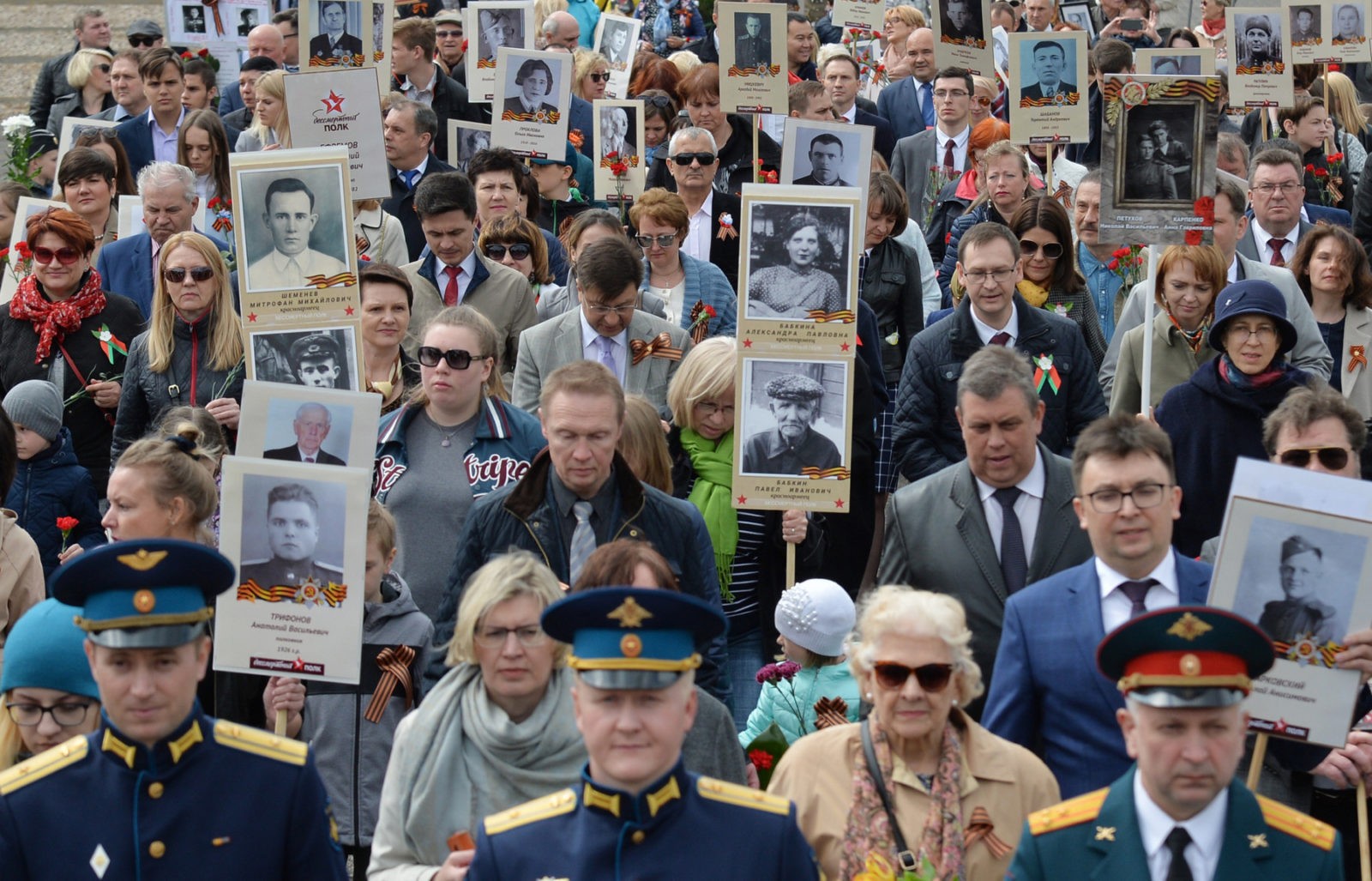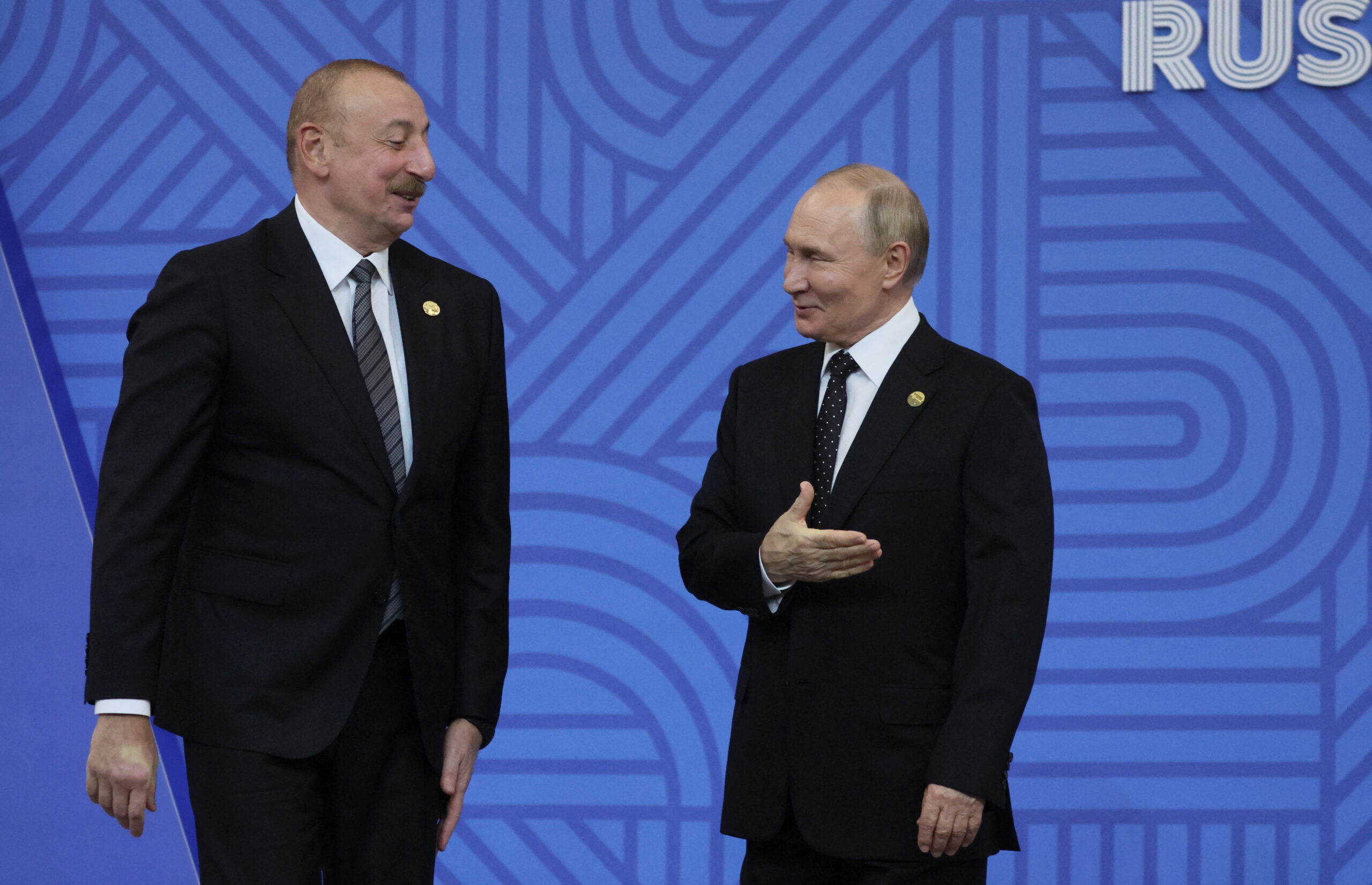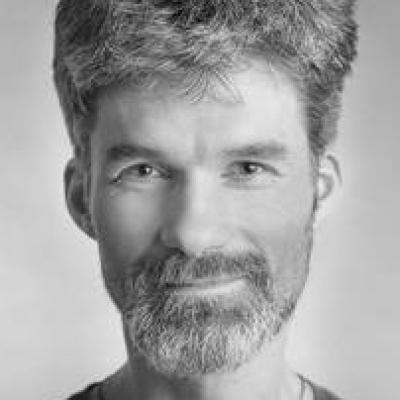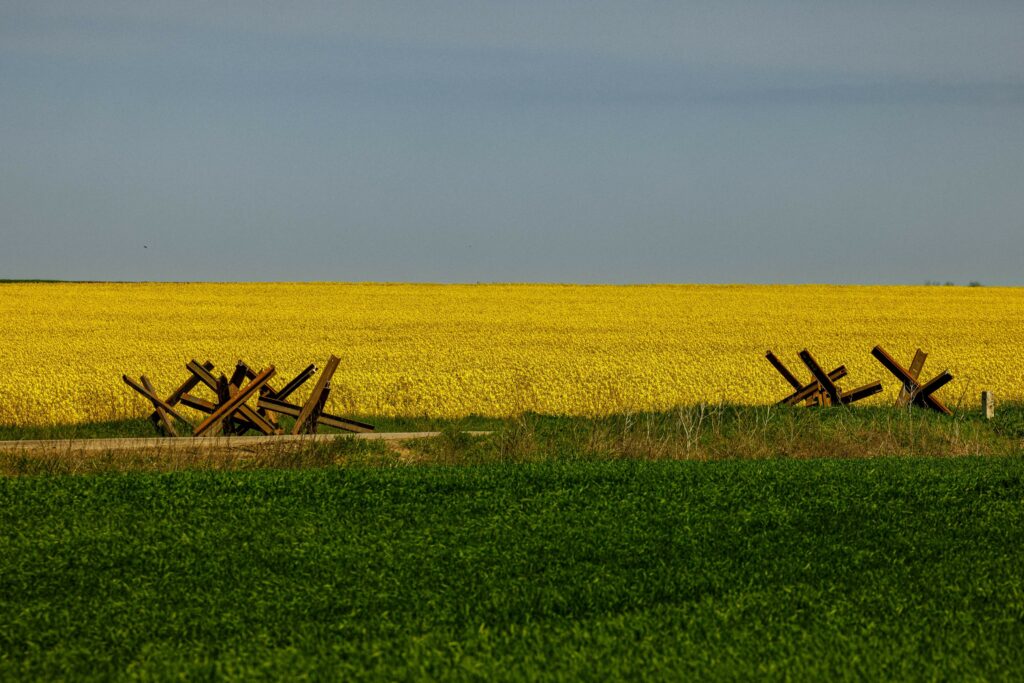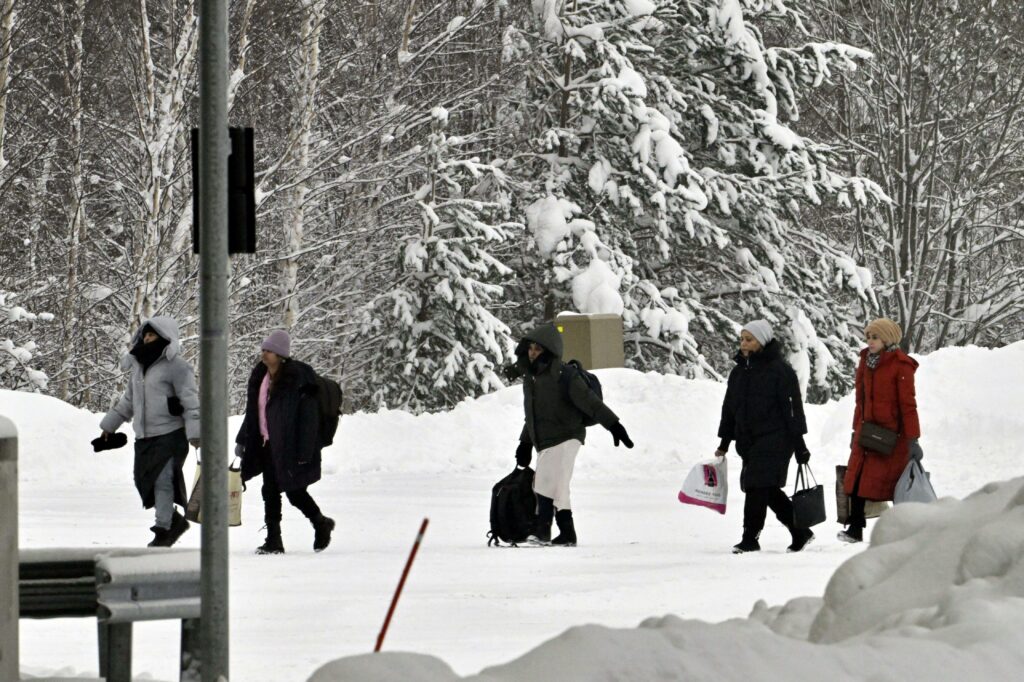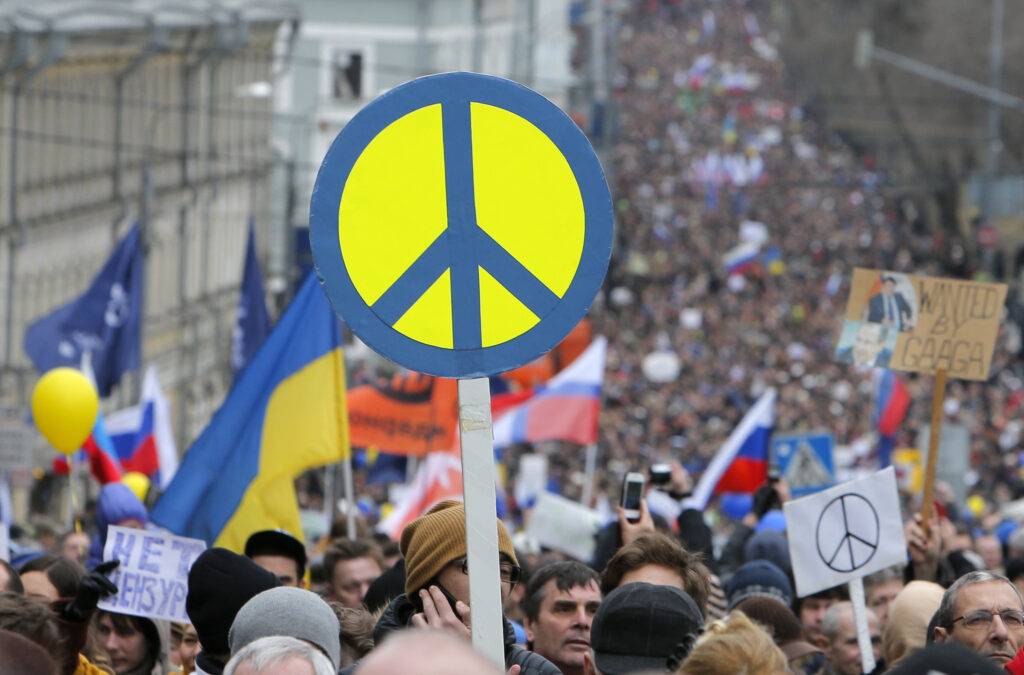Every year on Victory Day, thousands of Russians take to the streets holding portraits of their ancestors and loved ones who perished in the Second World War. These processions, known as the “Immortal Regiment,” have become a familiar sight in Russia’s towns and cities on May 9. The Immortal Regiment has become a new tradition, and has been formally organised as such for at least ten years.
Back in the early 2000s, many Russians marked Victory Day by walking onto the streets holding pictures of their relatives, but it took a social movement to unite these sporadic gestures into something on a wider scale. A group of journalists in the Siberian city of Tomsk did just that; the nation-wide event henceforth known as the “Immortal Regiment” was first held across several Russian cities on May 9, 2012. It proved wildly successful. By 2015 the coordination centre for the event was moved from Tomsk to Moscow, while the initiative was picked up by PR managers with government funding and full media support. That same year, which marked the 70th anniversary of the defeat of Nazi Germany, the Immortal Regiment officially featured in the programme of events for Victory Day in Moscow. High-ranking Russian officials flocked to demonstrate their interest in the procession, and at their head was Vladimir Putin.
Since that moment, the Immortal Regiment can be viewed simultaneously as a state-sponsored project deeply intertwined with official policies towards historical memory and as the collective representation of local, bottom-up commemorative initiatives. As activists still play a crucial role in bringing the Immortal Regiment to life in their communities, local dynamics nonetheless influence how the procession is held and its level of politicisation.
How did this civic initiative in a Siberian city become a cornerstone of the Kremlin’s commemorative policy?
The Immortal Regiment Goes International
The Immortal Regiment turned out to be very popular among Russian émigrés abroad. Since 2017, the processions have been held in various cities around the world. Russian diplomatic staff play an active role in organising the event, which has become something of an official method of cultural diplomacy. For those who have left Russia, attending an Immortal Regiment procession is more than an act of commemoration: it’s a strong assertion of their national and cultural identity. Russians living overseas are thus symbolically united in one regiment with their compatriots back home.
The Immortal Regiment is often criticised for being a conduit for the Russian authorities to promote their agenda. However, those attend it frequently see the event as an apolitical ritual of ethno-national solidarity with other Russians, even if that solidarity can be used for government propaganda. After all, it is obvious that the Immortal Regiment could never be held abroad without the interest shown by migrant and expatriate communities from Russia and other post-Soviet states. Their participation is voluntary; unlike at home, the Russian authorities have no way of coercing Russians living overseas to take part in the event. Nevertheless, it would be a mistake to assume that all participants in the Immortal Regiment share the values the state’s ideologues might ascribe to them. This same ambivalence can also be felt in discussions about the Immortal Regiment in Russia.
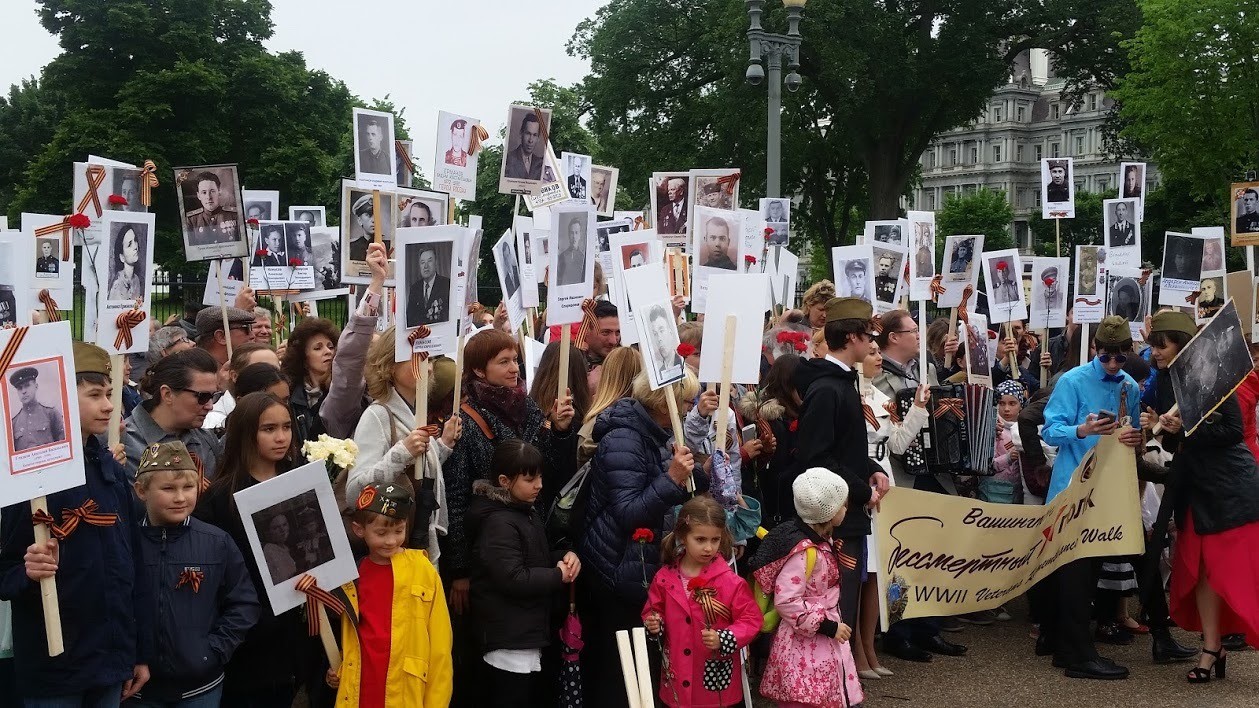
The Immortal Regiment in Washington DC, May 2017. Photo by M. Nemtsev
Problems With Portraits
Seven years ago, the founders of the Immortal Regiment could hardly have imagined the future success and scope of their initiative. But as the Immortal Regiment spread, so did the cracks and contradictions in state ideology. Everybody could agree that remembering the war was important; but when it came to exactly how to remember the war, public agreement was impossible to reach. The recent history of the Immortal Regiment provides a perfect illustration.
A key attribute in this public act of commemoration is the portraits of family members who fought in the Great Patriotic War (as the Second World War is known in Russia.) It was initially intended that these portraits would represent those who fell in battle or passed away after the war. As these people cannot take part in the parade, one of their descendants takes their place among its ranks. They thereby symbolically establish continuity with their celebrated ancestor.
Yet as the years pass, the link between the generation who fought in that conflict and their descendants is growing ever more distant, if not tenuous. By taking a portrait of somebody in his hands, a young Russian can walk the streets of his city and affirm his family’s role in the ultimate example of symbolic “goodness.” It is as if he can declare “we were there too.” For other descendants of veterans, closer family ties to that generation play an understandable and indisputable role in allowing them to rejoin a collective past, rich in a sense of purpose and a source of pride. In the Immortal Regiment, the personal and the civic are masterfully combined in a single act of “performative memory.”
The central contradiction of the Immortal Regiment is the lack of clarity around what precisely the portrait represents. The very premise that it is legitimate to bear a portrait of any and every person who played a role in the Great Patriotic War is based on a fundamentally Soviet account of the war; one cleansed of anything that would discredit the Soviet Union’s role and conduct in that conflict. In the post-Soviet era, this cleansed social memory of the war has become the basis for the Russian state’s official account of history, which also tends to excuse or simply cover up any inconvenient facts about Soviet foreign and domestic policy during the Second World War. No less important is the role of the strong discursive distinction between the Great Patriotic War (1941-1945) and the Second World War (1939-1945). While the distinction is being reconsidered by some in Russia, it nonetheless makes it possible to ignore an important but very painful element of the history of the war: namely, the fact of military and political cooperation between the Soviet Union and Nazi Germany between 1939 and 1941.
During the late Soviet era, the figure of the veteran was the embodiment of the official version of the war. The veteran retained the authentic experience of having fought in the war, the sense of “having been there,” while remaining completely loyal to all the meanings the state ascribed to that experience. But not every combatant was seen as a veteran. For example, Soviet soldiers who were captured by the enemy were “damaged goods” to be treated with suspicion; they could not be accepted by official veteran organisations. Those who were accorded the status of veteran received several advantages, not all of which are merely symbolic; holders of a veteran certificate in Russia today are entitled to additional benefits, access to social welfare, and in some regions of the country free public transport. They even receive at least formal respect from state officials.
Due to the exalted role of veterans in the state’s ideology and today’s economic situation, this lack of clear distinction of who counts as a veteran inevitably led to more and more faces appearing on the placards of the Immortal Regiment. Uncomfortable questions mounted alongside them. For example, do those who organised mass repressions before, during, or after the war merit a symbolic place in the Immortal Regiment? Is it appropriate that the portraits of those who fought on the front lines appear alongside those of people who murdered them?
In 2016 Vyacheslav Nikonov, a deputy of the State Duma, appeared at the procession of the Immortal Regiment holding a portrait of his grandfather Vyacheslav Molotov, Stalin’s Minister of Foreign Affairs. Nikonov’s move was controversial, and prompted heated debate. Due to the Molotov-Ribbentrop Pact in 1939, Molotov was arguably an initiator of the Second World War, and had also helped organise mass repressions in the preceding years. Some wondered whether his portrait belonged at the event. At the same time, while Molotov played a role during the war as a member of the General Staff, he was not a soldier and did not see front line combat. Therefore, Molotov was not technically a veteran. These debates did not reach any clear conclusion, and now resurface every year. In subsequent years, another dispute arose about the appearance of Stalin’s portrait at the event; simultaneously the commander-in-chief of the Soviet forces and the leading organiser (or chief executioner) of mass repressions. In 2019, the official organisers of the Immortal Regiment in the Russian capital announced that they “did not recommend” people to display Stalin’s portrait, but then declared that there was no prohibition against doing so.
Standardised Commemoration
The growth of the Immortal Regiment into a mass event led to a standardisation of its commemorative practices. The placards on sticks which participants hold are all provided by the central organisers of the event, and the portraits affixed to them are printed by mass order to the same specifications (this year a strange event occurred in the Crimean city of Sevastopol, where competitors stole 500 of the portraits from members of the Immortal Regiment organisation.) The organisers also ensure that those participants who have no ancestor to commemorate are given a portrait to hold; the latter usually throw away these images of strangers as soon as the procession ends.
Providing these portraits is a necessary measure for the organisers of the event, who aim to increase its turnout as much as possible. An Immortal Regiment would not look like an Immortal Regiment without them. However, this leads to the second contradiction of the Immortal Regiment. The main unit of the Immortal Regiment is formed by those who, as originally envisaged, come out to march holding a portrait of their immediate ancestors who fought in the war. Their procession is a public affirmation of their descent from heroes. There is inevitably a deeply intimate dimension to their act: a symbolic family meeting with generations past that engenders a deep sense of belonging. That sense of belonging plays a major role in why the Immortal Regiment has become such a popular and sought after experience.
But what about those who do not have a portrait of a relative in uniform to hold up with pride? Or those whose predecessors survived the war but were not awarded the title of “veterans”? As mentioned earlier, they are nonetheless eligible to participate by taking the portrait of a complete stranger. Thus participation in the procession is important, not simply personal commemoration. With the erosion of strict “entry requirements” to the Immortal Regiment, along with its transformation into a mass spectacle, its participants lose their individuality, becoming just another pinprick in a sea of faces at a mass event. In this sense, the participant’s demonstration of a genuine personal connection to an ancestor becomes redundant; he is no longer a symbolic intermediary to that past. Instead, the participants’ role is to demonstrate loyalty to the state’s official account of the war and the victory in 1945. Clearly this does not dissuade many participants; this willing self-identification with the official narrative can be easily seen in the mass popular enthusiasm for wearing imitation military uniforms from the 1940s. In other words, the ties of national-patriotic identity have been imposed on the familial ties around which the Immortal Regiment was built. Alongside the sharp increase of the number of participants and a powerful media campaign, the most important factor in that change was the centralisation of the Immortal Regiment’s organisation.
Organised processions down city streets are common public events in Russia. Therefore, the Immortal Regiment can be easily integrated into any local programme of events on a public holiday, regardless of who is participating and the event’s precise meaning. Thanks to this hybridity, the Immortal Regiment proved to be a very successful innovation, if not the most important public form of celebrating Victory Day in the country today. Many other commemorative initiatives also arose around the procession, such as the sale of souvenirs bearing the words “Immortal Regiment.”
The Perpetual Immortal Regiment
The appearance of the Immortal Regiment successfully and effectively resolved an important problem of symbolism for Russia’s authorities. Victory Day as it had been celebrated in the late Soviet era required the public appearance of war veterans. The collapse of the Soviet Union, brought a collapse of the normal routine of these celebrations: parades were not held for several years, and the holiday gradually returned to private and family life. Meanwhile, the veterans themselves grew old and passed away. However, by the 2000s, the celebrations had resumed and became the highlight of the official commemorative calendar. “Instead of the holiday where the veterans had previously been,” writes the historian Ivan Kurilla in his study of the Immortal Regiment, “there was a gaping hole. The importance of the holiday to the state forced officials to promote any initiatives which humanised the event.” But “humanisation” required the public presence of a living person, as a witness of the events being commemorated with authentic memories and authoritative judgements on that past.
The appearance of the Immortal Regiment has solved this problem. Its appeal to family ties does not merely allow participants not only to bear witness to their ancestors’ deeds, but to embody them in person. The fact that there are fewer and fewer veterans alive with each passing day is no longer a problem; the Immortal Regiment can now march on forever.
There is no longer a practical need for veterans’ presence during celebrations of Victory Day. The “fake veterans” unmasked every year by attentive observers are a mere curiosity at best: as long as the status still has traces of symbolic value, people will try to make use of it. Nevertheless, these occurrences only confirm that veterans no longer enjoy the same exalted place as they once did in the great drama of Victory Day celebrations. They have left the stage and been replaced. In coming years it may even become difficult to speak of a strict chronological limit on whose face may appear on a portrait. If participants can bring images of Stalin, why not accept the proposal of the Russian Orthodox Church and permit those of the heroes of the War of 1812? Why shouldn’t they bring portraits of those who fought in Russia’s latest wars?
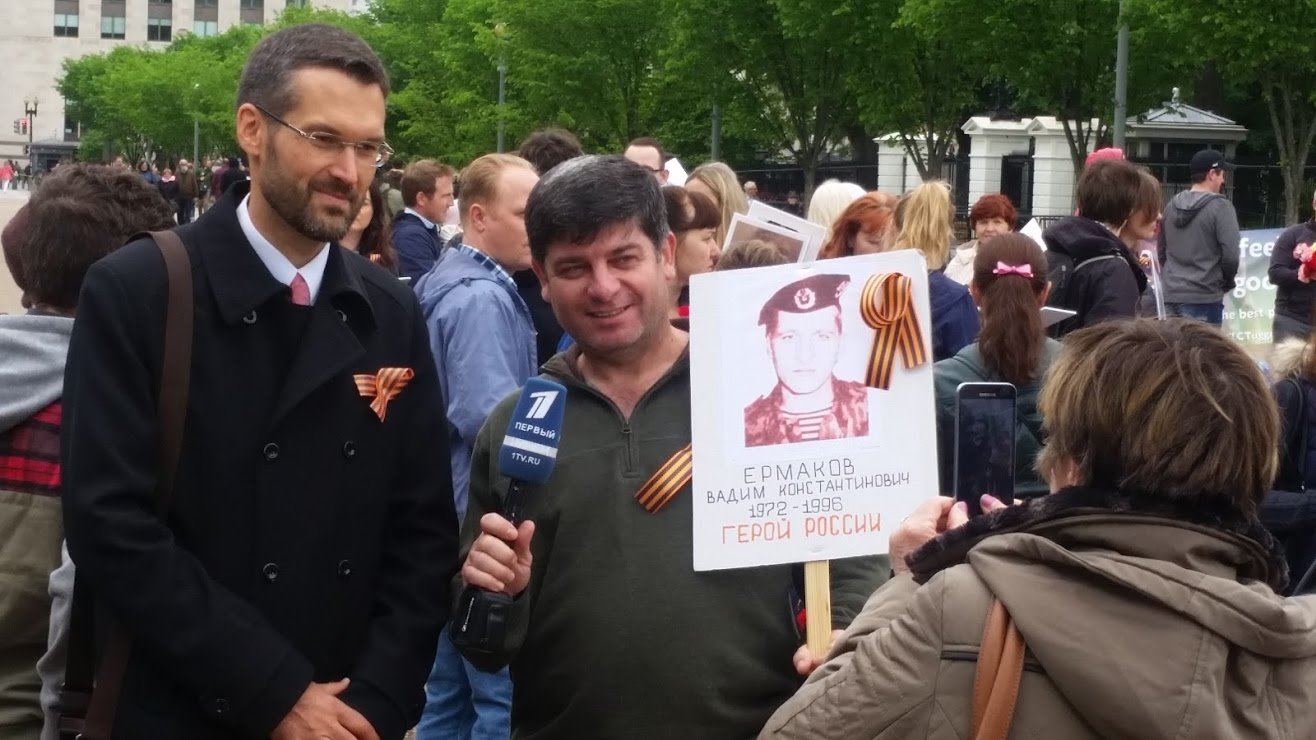
The Immortal Regiment in Washington DC, May 2017. Photo by M. Nemtsev
